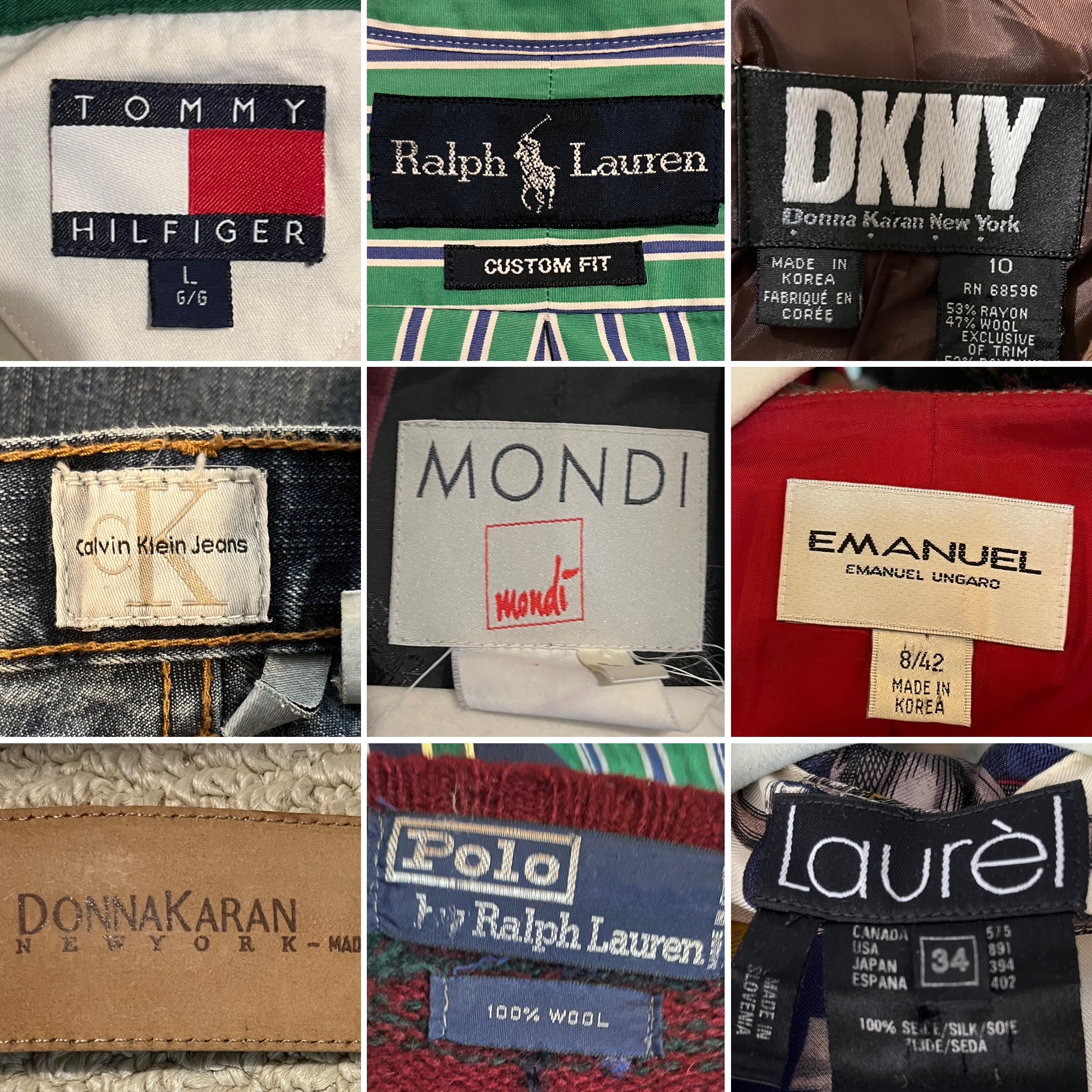Why Branded Clothing Made with Natural Fibers Feels Better
Why Branded Clothing Made with Natural Fibers Feels Better
Blog Article
The Importance of Lasting Clothing: Exactly How It Affects the Setting and Your Wardrobe
Sustainable clothing is increasingly identified for its crucial role in reducing the environmental impact of the fast style sector. By focusing on green products and ethical manufacturing techniques, it addresses pushing ecological concerns. This change not just profits the world however likewise influences customer options, bring about a much more thoughtful approach to closet management. Understanding these characteristics increases vital questions concerning fashion's future and individual responsibility fit it.
The Environmental Footprint of Rapid Fashion

Advantages of Lasting Products
Lasting products provide considerable benefits, especially with environment-friendly fabric choices that decrease ecological injury. These materials also show toughness and durability, decreasing the need for frequent substitutes. Consequently, they contribute to a more lasting garment industry and promote responsible customer habits.
Eco-Friendly Material Selections
While the style market has long been related to quick trends and ecological injury, the increase of eco-friendly textile choices presents a transformative chance. Lasting materials such as natural cotton, hemp, and Tencel have acquired popularity due to their reduced environmental influence. These materials are frequently generated without harmful pesticides and call for much less water, decreasing their carbon footprint - Branded Clothing. Furthermore, many environment-friendly fabrics are naturally degradable, adding to a circular economic situation by reducing waste. Choosing lasting products not only supports ecologically liable practices however also promotes much healthier ecological communities. As consumers end up being much more aware of their purchasing power, the demand for eco-friendly materials urges brands to innovate and embrace more lasting manufacturing techniques, inevitably profiting the world and future generations
Sturdiness and Long Life Advantages
Many consumers are progressively identifying the durability and longevity benefits of sustainable materials in their clothes options. Unlike traditional materials, sustainable products such as natural cotton, hemp, and recycled polyester are crafted to stand up to damage, resulting in garments that last much longer. This lowered regularity of substitute not just conserves customers money in time yet also diminishes waste generated by rapid style. Furthermore, lasting garments often employs environment-friendly production methods that improve textile toughness, adding to a reduction in the total carbon impact. By purchasing resilient clothing, customers can cultivate an extra lasting closet while appreciating high-quality items that preserve their aesthetic and capability gradually. Toughness and durability stand as key advantages of selecting lasting materials.
Reducing Waste Through Lasting Practices
Minimizing waste in the fashion business can be accomplished via cutting-edge practices such as upcycling and repurposing materials. Additionally, adopting minimalist wardrobe techniques motivates customers to focus on top quality over amount, ultimately reducing clothes usage. With each other, these approaches add substantially to an extra sustainable clothes design.
Upcycling and Repurposing Materials
Upcycling and repurposing products have arised as cutting-edge approaches in the garment industry, changing thrown out fabrics into important brand-new items. This strategy not only lessens waste however also encourages creative thinking and individuality in garments layout. By taking old garments and materials, developers can produce special pieces that show personal style while minimizing the need for new sources. In addition, upcycling commonly needs less power and water contrasted to traditional production procedures, substantially decreasing the ecological footprint of style. As customers become extra aware of sustainability, the appeal of upcycled clothing remains to climb, advertising a round economic climate. Eventually, these techniques add to an extra sustainable future, where style focuses on ecological health over rapid manufacturing and usage.

Minimal Closet Approaches
As people significantly seek to lessen their environmental effect, embracing minimal wardrobe strategies has obtained traction as a reliable approach to lasting fashion. These methods emphasize top quality over quantity, motivating customers to curate a smaller collection of functional, durable garments. By concentrating on classic pieces that can be combined and matched, people can lower the frequency of purchases and eventually reduce waste.Additionally, minimalism promotes conscious consumption, prompting consumers to show on the ecological and ethical ramifications of their options. This method not just promotes a much more sustainable way of living yet likewise simplifies day-to-day decision-making regarding attire. As individuals accept minimalist principles, they add to a fashion culture that values sustainability and accountable consumerism, ultimately resulting in an extra eco-conscious society.
The Role of Moral Labor in Lasting Style
While numerous consumers are significantly knowledgeable about the ecological consequences of their apparel choices, the value of moral labor techniques in sustainable style can not be ignored. Honest labor incorporates fair salaries, risk-free working conditions, and regard for workers' legal rights, developing the foundation of liable style production. Brand names that prioritize ethical labor not only boost neighborhoods yet likewise set a standard for liability in the industry.Moreover, the integration of ethical methods fosters openness, making it possible for consumers to make informed options about their acquisitions. This technique contrasts greatly with fast style's unscrupulous labor designs, which usually focus on revenue over individuals. By sustaining firms devoted to honest labor, customers contribute to a system that values human dignity along with ecological sustainability. Moral labor is not just an add-on; it is vital to the wider mission of lasting fashion, guaranteeing that the mission for eco-friendliness does not come at the expenditure of human civil liberties.
The Impact of Sustainable Garments on Carbon Emissions
Sustainable clothing has the possible to considerably decrease carbon emissions related to the style industry. Typical garment manufacturing adds notably to greenhouse gas emissions, mostly because of energy-intensive manufacturing processes and using non-renewable sources. In contrast, lasting style concentrates on eco-friendly materials, such as natural cotton or recycled fibers, which frequently need less energy to produce.Moreover, lasting brand names have a tendency to take on more reliable manufacturing techniques, lessening waste and decreasing general exhausts. By prioritizing sturdiness and ageless style, lasting garments encourages consumers to purchase much less often, additional lowering the carbon impact related to overconsumption.Additionally, several lasting brand names are dedicated to openness in their supply chains, enabling customers to make enlightened choices that line up with their worths. Inevitably, shifting in the direction of lasting clothing can bring about a significant reduction in carbon emissions, contributing to a healthier world and a much more sustainable future for the garment industry.
Sustaining Regional Economies With Sustainable Choices
The shift towards sustainable garments not just addresses ecological concerns yet additionally substantially benefits regional like it economic climates. By choosing sustainable fashion, customers often support small businesses and regional craftsmens, enhancing neighborhood durability. These business normally operate a smaller scale, focusing on workmanship and moral methods over mass production.Investing in locally made lasting clothing promotes work production and boosts economic development within communities. As consumers come to be much more mindful of the environmental influence of their acquisitions, they progressively seek out items that reflect their worths. This demand urges regional makers to adopt sustainable practices, adding to a round economy.Moreover, supporting local companies reduces transportation discharges, lining up with eco-conscious customer behavior. The interconnectedness of sustainable clothes and local economic situations emphasizes the necessary function that private options play in advertising both ecological and economic wellness. By fostering these regional connections, communities can prosper while additionally working in the direction of an extra lasting future.
Changing Your Wardrobe: Tips for a Lasting Closet
As individuals seek to minimize their environmental influence, changing a storage room into a sustainable closet becomes a necessary action. One reliable approach is to review existing garments, keeping only products that are put on on a regular basis and that line up with sustainability objectives. Prioritizing high quality over quantity is vital; investing in long lasting items from environment-friendly brand names can significantly reduce waste.Additionally, integrating second-hand things can rejuvenate a closet while decreasing environmental damages. Organizing clothing swaps with pals or donating unused products can additionally promote sustainability.When purchasing, individuals ought to look for materials that are natural, recycled, or eco-friendly, and avoid rapid style sellers - Branded Clothing. Practicing mindful usage by attentively thinking about each acquisition can add to a more lasting way of living. By carrying out these pointers, one can produce a closet that reflects personal style while supporting ecological stewardship
Frequently Asked Inquiries
How Can I Determine Lasting Garments Brands?
To determine sustainable garments brands, one ought to investigate products used, inspect for certifications like Fair Trade, and check out the brand's openness regarding their production procedures, labor practices, and environmental impact, ensuring honest and environmentally friendly methods are focused on.
What Are the Costs Connected With Lasting Fashion?
The prices connected with sustainable style can vary substantially. Greater production costs, moral sourcing, and green materials frequently cause enhanced market prices, which may discourage some customers while appealing to eco mindful shoppers.
Can Sustainable Apparel Be Fashionable and Trendy?
Sustainable clothes can undoubtedly be fashionable and fashionable. Designers increasingly focus on innovative products and moral manufacturing methods, confirming that style and sustainability can exist side-by-side. Consumers currently have diverse choices that blend appearances with environmental consciousness.
How Does Washing Clothing Affect Their Sustainability?
Washing clothing greatly influences sustainability by consuming water and power, you could try these out adding to pollution, and creating microplastic release. Regular cleaning can deteriorate fabrics, shortening their lifespan and increasing the need for substitutes, ultimately exacerbating environmental problems.
What Is the Life Expectancy of Sustainable Clothes Compared to Quick Style?
The life expectancy of sustainable apparel commonly surpasses that of fast fashion items, often long-term several years as a result of top quality click this site materials and craftsmanship. In contrast, fast fashion garments may weaken quickly, demanding even more frequent substitutes. Sustainable garments is progressively acknowledged for its essential function in minimizing the ecological influence of the fast fashion market. While many customers are progressively mindful of the ecological repercussions of their clothing options, the significance of ethical labor techniques in lasting fashion can not be neglected. Branded Clothing. Lasting clothes has the possible to substantially minimize carbon emissions connected with the style sector. In comparison, sustainable style concentrates on green products, such as organic cotton or recycled fibers, which often need less energy to produce.Moreover, lasting brand names tend to adopt extra reliable manufacturing methods, decreasing waste and lowering total discharges. By prioritizing longevity and timeless style, lasting garments urges consumers to buy less frequently, additional lowering the carbon footprint associated with overconsumption.Additionally, several sustainable brand names are dedicated to openness in their supply chains, enabling customers to make informed choices that line up with their values
Report this page